Results 6,421 to 6,430 of 12096
Thread: Anandtech News
-
10-26-16, 02:06 PM #6421
Anandtech: Seagate Introduces New Generation of Enterprise Performance 15K HDDs with
Seagate on Tuesday announced its new generation of hard drives with 15K spindle speed and up to 900 GB capacity. The new HDDs use NAND caching to boost response times, offer additional SED and SED-FIPS security features at no extra cost and boast with enhanced reliability for 24x7 workloads.
The new Seagate Enterprise Performance 15K v6 HDDs come in 300, 600 and 900 GB configurations. Just like their predecessors, they use a dual port SAS 12 Gbps interface as well as a 2.5”/15 mm form-factor. The new Enterprise Performance 15K v6 hard drives have single or dual level caches: either a 256 MB of DRAM cache only or a 256 MB of DRAM cache and a 16 GB of NAND flash cache (4Kn/512E models only). The latter is used for caching of frequently used “hot” data to maximize read performance and reduce latencies (Seagate offers similar capability with its consumer-grade FireCuda and other SSHDs). It is noteworthy that Seagate reduced the amount of NAND flash compared to previous-generation 15K HDDs, but the company seems to believe that its improved caching algorithms will ensure that the new drives are faster than their predecessors.
When compared to predecessors, the new sixth-generation 15K HDDs are rated for a 27% increase in sequential read write speed: up to 315 MB/s. In addition, the drives also promise 100% faster random write performance. Seagate claims that its advanced caching algorithms promote hot data three times faster when compared to 512N drives without NAND, but it does not reveal exact performance numbers for its NAND cache. When it comes to reliability, Seagate declares 2 million hours MTBF and an annualized failure rate of 0.44%, which is in line with the predecessors.
To simplify inventory management, Seagate will offer Seagate Enterprise Performance 15K v6 hard drives with its FastFormat feature, which allows formatting the drives to either 512 emulation or 4K native formats, thus reducing the number of models the manufacturer has to produce and its resellers have to keep in stock.Seagate Enterprise Performance 15K v6 Family at Glance Capacity 300 GB 600 GB 900 GB Model Number Standard Model 512N ST300MP0006 ST600MP0006 ST900MP0006 512E/4Kn ST300MP0106 ST600MP0136 ST900MP0146 SED 512N ST300MP0016 ST600MP0016 ST900MP0016 512E/4Kn ST300MP0116 ST600MP0146 ST900MP0156 FIPS 140-2 512N - ST600MP0026 ST900MP0126 512E/4Kn - ST600MP0156 ST900MP0166 Controller Seagate's proprietary LSI DRAM Cache 256 MB DRAM NAND Flash Cache 512N none 512E/4Kn 16 GB of read cache Form-Factor, Interface 2.5", SAS 12 Gbps Sustained Transfer Rate (Outer to Inner Diameter) 512N 300 MB/s ~ 210 MB/s 512E/4Kn 315 MB/s ~ 215 MB/s Average Latency 2 ms Random Read IOPS 720 IOPS Random Write IOPS 400 IOPS Power Consumption 6.9 W 7.2 W 7.6 W TCG Opal Encryption Yes Warranty 5 years MTBF 2,000,000 hours MSRP Unknown Unknown Unknown
Nowadays 15K HDDs are no longer the fastest storage devices, even in RAID environments - modern high-end enterprise-class SSDs usually offer considerably higher random and sequential performance. Nonetheless, 10K and 15K hard drives for mission-critical applications are still used by multiple datacenters worldwide. Moreover, some say that there are deployments that use both mission-critical SSDs as well as fast mission-critical HDDs, which suggests that the new drives will have some demand. In fact, Seagate claims that the total available market for such HDDs is around six million units per quarter, but admits that sales of 15K drives have been declining recently. Still, the company itself sells roughly three million of such drives every three months. Given the very long life cycles of mission-critical HDDs, it looks like development of this 15K generation makes sense for Seagate.
Exact pricing of Seagate’s sixth-generation Enterprise Performance 15K HDDs will depend on volumes and contracts. Interested parties should get in contact directly with their local Seagate distribution partners.
Gallery: Seagate Introduces New Generation of Enterprise Performance 15K HDDs with NAND Caching





More...
-
10-26-16, 03:50 PM #6422
Anandtech: EIZO FlexScan EV2451 & EV2456 Launched: Thin Bezels in 16:9 and 16:10
EIZO has introduced two new displays designed for specialized and business environments that require multi-monitor setups. The new FlexScan EV2451 and EV2456 are equipped with ultra-thin bezels for their standout feature, and are IPS panels with 178° viewing angles as well as four display inputs to maximize compatibility.
The FlexScan EV2451 and EV2456 monitors have generally typical specifications for today’s office displays: 1920×1080 and 1920×1200 resolution (respectively), 250 and 350 nits brightness (respectively), a 60 Hz refresh rate and a rated 1000:1 contrast ratio. The monitors can use DisplayPort, HDMI, DVI-D or D-Sub to connect to host PCs such that they can be used with new and legacy computers. In addition, they support EIZO’s EcoView Optimizer 2 feature, which dynamically adjusts backlight brightness in accordance with environment brightness to reduce power consumption.
The key features of the two monitors are their ultra-thin bezel sizes: 1 mm on the sides and top as well as 4.6 mm on the bottom (keep in mind that that the monitors also have black borders between bezels and screens, hence, we cannot call them completely borderless). Such thin bezels mean that EIZO is aiming these displays for multi-monitor setups used in trading and control rooms. Moreover, such bezels make the FlexScan EV2451 and EV2456 monitors plausible candidates for gamers, who might use multiple monitors to play titles like flight simulators.
To maximize flexibility for multi-display environments, both monitors also use new stands with height-adjustment range of 158.6 mm (EV2456) and 172.7 mm (EV2451) as well as 40° (5° down, 35° up) tilt, 344° swivel, and 90° pivot for viewing in portrait mode. The stands can be easily removed using their quick-release buttons, and the screens can be installed onto a VESA-compatible mounting device. Finally, EIZO also supplies special Screen InStyle software that lets users adjust the color, circadian dimming and power settings on multiple FlexScan displays at once. This includes flicker free modes, blue-light reduction modes, and paper-reading modes.EIZO FlexScan EV2451 and EV2456 FlexScan EV2451 FlexScan EV2456 Panel 23.8" IPS 24.1" IPS Native Resolution 1920 × 1080 1920 × 1200 Maximum Refresh Rate 60 Hz Response Time 5 ms Brightness 250 cd/m² 350 cd/m² Contrast 1000:1 Viewing Angles 178°/178° horizontal/vertical Inputs 1 × DP 1.2
1 × HDMI 1.4
1 × DVI-D
1 × D-SubUSB Hub 2-port USB 3.0 hub Audio 1 W × 2
audio in/out portsPower Consumption Typical 13 W 11 W Maximum 42 W 44 W
EIZO plans to start shipments of its new monitors shortly, their prices will naturally vary by country. The predecessor of the FlexScan EV2456 (the EV2455) has an MSRP of $569 in the U.S., whereas the predecessor of the FlexScan EV2451 (the EV2450) costs $399 in the U.S. As for warranty, the FlexScan monitors come with a five-year warranty with a six-month zero bright sub-pixel guarantee.
More...
-
10-27-16, 07:16 AM #6423
Anandtech: The Clevo P870DM2 / Mythlogic Phobos 8716 Laptop Review: DTR With GTX 1080
Sometimes there is no substitute for performance. Most of the laptop market is focusing on thin and light designs, with companies attempting to outdo each other by shaving a millimeter or two off of their laptop compared to the competition. But in the Desktop Replacement (DTR) category, there is no such concessions. Clevo is one of the few laptop makers that is in the DTR market, and thanks to the assistance of Mythlogic, we have the Mythlogic Phobos 8716 DTR for review today. As a Clevo, the model would be P870DM2.
More...
-
-
10-27-16, 05:54 PM #6425
Anandtech: Apple Announces 4th Generation MacBook Pro Family: Thinner, Lighter, with
Much ink has been spilt over the last year on the subject of the MacBook Pro. In short, Apple hasn’t given its professional laptop lineup a real overhaul in some time. Only the smaller 13” model ever got Intel’s 5th gen Broadwell CPU – the 15” model is even further back, on 4th gen Haswell – and otherwise the laptops haven’t had major feature updates since 2013. As a result, Apple has been due as anyone can be to update their laptops. And at a special event held at their campus this morning, they have done just that, launching the 4th generation of the MacBook Pro.
For better or worse the new 4th generation family doesn’t have a catchy name like Retina to help set it apart from the prior models. But make no mistake, Apple has been busy on giving their languishing laptops a much-needed facelift.
All-told, Apple has introduced 3 new MacBook Pro models: a basic 13” version, and then two full-featured versions at 13” and 15” respectively. All three models are form the same mold, so to speak. All of them get the same new unibody design, the same wide color gamut (P3) display, and the same upgraded internal hardware composed of Intel’s 6th generation Skylake CPUs, Thunderbolt 3, and new SSDs. What separates the basic 13” from the other two models, besides cost, is that it doesn’t include Apple’s new much-touch Touch Bar (more on this in a sec).
If you’ve been watching Apple over the years, then you know that the company has a (sometimes unhealthy) obsession with reducing their products’ thickness, and the 4th gen MacBook Pro follows that obsession to a T. The new family of laptops is thinner than ever, with Apple taking them from 18mm to 14.9mm and 15.5mm for the 13” and 15” models respectively. Altogether, the total volume is down 23% for the 13” model and 20% for the 15” model.4th GenMacBook Pro Lineup Model 2015 15" 2016 13" (basic) 2016 13" (touch) 2016 15" Dimensions 1.8 cm x 35.89 cm x 24.71 cm 1.49 cm x 30.41 cm x 21.24 cm 1.55 cm x 34.93 cm x 24.07 cm Weight 4.49 lbs (2.04 kg) 3.02 lbs (1.37 kg) 4.02 lbs (1.83 kg) CPU 2.2GHz Core i7-4770HQ
(Haswell)2.0GHz Core i5-6360U (Skylake) 2.9GHz Core i5-6267U (Skylake) 2.0GHz Core i7-6700HQ (Skylake) GPU Intel Iris Pro 5200 Intel Iris Graphics 540 Intel Iris Graphics 550 Intel HD Graphics 530 + Radeon Pro 450 (2GB) Display 15" 2880 x 1800 IPS LCD
sRGB Gamut13" 2560 x 1600 IPS LCD
P3 Gamut15" 2880 x 1800 IPS LCD
P3 GamutMemory 16GB DDR3L-1600 8GB LPDDR3-1866 8GB LPDDR3-2133 16GB LPDDR3-2133 SSD 256GB PCIe SSD (PCIe x2) 256GB PCIe SSD Toucb Bar No No Yes I/O 2x Thunderbolt 2 (supports DP1.2), 1x HDMI 1.4, 2x USB 3.0 (Type-A), 3.5mm Audio, SDXC Slot 2x Thunderbolt 3 (supports DP1.2 & USB 3.1 Gen 2 modes),
3.5mm Audio4x Thunderbolt 3 (supports DP1.2 & USB 3.1 Gen 2 modes),
3.5mm AudioBattery Capacity 99.5 Wh 54.5 Wh 49.2 Wh 76 Wh Battery Life 9 Hours 10 Hours Price $1999 $1499 $1799 $2399
Apple is still using their now tried-and-true aluminum unibody design for the family, so if you’re familiar with the current color-coated MacBook, then you know what to expect here. Though the event was very brief on how Apple was able to shave off so much volume compared to the last generation, it sounds like they’ve gone with a thinner cooling system, and in the case of the 15” model, AMD’s low-profile Polaris 11 GPU.
Under the hood, this change in volume comes without a significant change in official TDPs (so all factors held equal, Apple would be removing the same amount of heat in a thinner design). Apple has finally made the jump across the entire family to Intel’s 14nm Skylake processors. The basic 13” model uses a 15W CPU, the higher-end 13” model uses a 28W CPU, and the 15” model uses a 45W CPU, the latter two being the same TDPs as the last generation. Apple isn’t talking up CPU performance too much here, but given how long they’ve been on Haswell on the 15” model in particular, we should see a good performance bump.
Meanwhile, in a change from the 3rd generation design, all 15” 4th gen MacBook Pros come with discrete Radeon Pro graphics. Apple has tapped AMD’s new Polaris 11 GPU, in part for the low z-height it offers, which replaces the 4 year old Cape Verde GPU in the previous MacBook Pro. Apple is offering 3 dGPU configurations at increasingly higher performance. From what AMD has told me, these chips are all in the ballpark of 35W. Relative to the previous dGPU models – or even more, the previous model that only offered an integrated Intel GPU – GPU performance should be greatly improved over the last generation. Over 2x for the top-tier Radeon Pro 460 is a very reasonable assumption right now, though one that testing will need to confirm.
On the SSD side of matters, Apple has quickly talked up the fact that the new MacBook Pros use a new SSD. Apple traditionally uses multiple vendors, but the quoted 3GB/sec read speeds are consistent with the latest generation of drives out of Samsung and Toshiba. So is the fact that Apple is now offering SSDs up to 2TB in size.
More visible is the change to the display. Apple hasn’t increased their resolutions at all – so these are the same 2880x1800 & 2560x1600 resolution configurations at before – but they have upgraded what these displays can do. All of the MacBook Pros now support the wider P3 color gamut that Apple has been championing for the last year and already offers on the iMac, iPhone 7, and iPad Pro. Meaning that the new laptops now support a wider color gamut and can display material mastered for P3 (or photos taken from the iPhone 7) at their full gamut. The new displays are also said to be quite a bit brighter than before; Apple is throwing around 500 nits, or 67% brighter.
And, perhaps most interestingly, Apple has confirmed that the new displays support “variable refresh rate” technology. I need to dig into this more, but if this is an implementation of AMD’s FreeSync tech or something similar, then it would potentially be a nice improvement in perceived screen smoothness. Apple’s also touting that the new display consumes 30% less power, but it’s not clear how much of that is due to variable (e.g. lower) refresh rates and how much of that is from panel and backlighting improvements.
Apple has also reworked the keyboard and trackpad, in part to integrate the latest technologies and to achieve their thinness goals. The new MacBook Pros utilize a newer revision of the butterfly switch first introduced on the MacBook keyboard. This means we’re talking about a shorter travel distance than the prior generation MacBook Pros – something that may not be popular in all corners – but at the same time we’re told that these aren’t the same identical switches as on the MacBook, and that there have been some changes to improve the feel. Meanwhile the Force Touch trackpad has been enlarged; it now goes from the bottom edge of the laptop to the keyboard, the full area that Apple could hope to give it. This is a 100% area increase for the 15” model, and a 46% increase for the 13” model.
Apple has also overhauled their input/output options on the new MacBook Pros; quite radically in fact. Apple has doubled-down on Thunderbolt 3/USB Type-C. All three models contain solely either 2 (13” basic) or 4 (all other models) TB3 ports (which also double as USB-C 3.1 Gen 2 ports), and then a 3.5mm audio jack. This means the MagSafe port is gone, as are the USB Type-A ports and the Thunderbolt 2 ports. In this sense it’s very close to what has happened with the MacBook, except the MacBook Pro gets a larger number of ports. TB3 is enabled through the use of Intel’s Alpine Ridge controller; the 2 port versions have a single controller, and the 4 port versions have 2 controllers (since Intel doesn’t make a 4 port version). Furthermore all 2 or 4 ports can be used for charging or display outputs as necessary, so they are all equals in functionality.
Last, but certainly not least however, is perhaps the marquee feature of the 4th generation MacBook Pros: the Touch Bar. A bit of a poorly kept secret in the run-up to today’s launch, the Touch Bar is a (presumably OLED) capacitive multi-touch display that replaces the row previously occupied by the function keys. The idea, in a nutshell, is to make a dynamic row of virtual buttons that can be whatever an application (or user) needs them to be, bringing with it all of the advantages of multi-touch that Apple has developed over the years for their iOS devices. Note that the Touch Bar is only available on the higher-end MacBook Pros; the basic 13” model forgoes the Touch Bar in favor of a traditional row of function keys, presumably for cost reasons.
Rounding out the feature set, the Touch Bar also includes a Touch ID fingerprint sensor on its right side, and the necessary controller – what Apple calls the T1 – to handle Touch ID and the Secure Enclave duties. This sensor means that virtually everything that can be done with Touch ID on iOS devices can be extended to macOS: one-touch login, Apple Pay confirmation, etc. You can even use it to do things iOS can’t do, such as swap between users. Taking a page from those iOS devices, the Touch ID sensor is the one physical button that’s part of the Touch Bar; it is both a fingerprint scanner and the device’s physical power button.
Judging from the presentation alone, the Touch Bar is going to be divisive among users. Replacing physical buttons with a capacitive strip is a major change; if you’re used to feeling buttons, there’s nothing here to feel. On the other hand, Apple is convinced that the function keys are underutilized right now, and that space can be put to better use. Even with the track pad already offering Force Touch, the Touch Bar has the advantage of being able to display what button it is, and behave separately from the trackpad. As someone who admittedly is still old school enough to configure the function keys to work as actual function keys – and not the screen/sound/playback controls Apple defaults to – I’m definitely going to have to sit down with the new Touch Bar to get an idea of what the transition is like. It’s a bold idea for Apple; but bold ideas can be both good and bad.
Wrapping things up, the new MacBook Pros are available for order today. The basic 13” model (the one without the Touch Bar and only 2 TB3 ports) will retail for $1499 and is shipping immediately. The other two models will be at $1799 and $2399 for the 13” and 15” models respectively, and will not be shipping for another 2-3 weeks.
Finally, Apple has also illustrated how the overall MacBook family of laptops is organized now that they’ve added the new MacBook Pros. The 11” MacBook Air has been removed from sale entirely, while the 13” model is still for sale, but hasn’t received any update. Given that the new MacBook Pros are thinner than the MacBook Air 13”, it seems likely that it’s going to eventually be phased out entirely. Consequently the new, modern MacBook lineup consists of 4 laptops: the 12” MacBook, the basic 13” MacBook Pro, the advanced 13” MacBook Pro, and the 15” MacBook Pro.
More...
-
10-27-16, 05:54 PM #6426
Anandtech: LG Introduces New UltraFine 4K and 5K Monitors
Today LG and Apple made a joint product announcement of sorts. Apple announced their new MacBook Pro, which uses four Thunderbolt 3 ports for IO. During the launch event, Apple also noted that LG would be launching a new pair of monitors to go along with the MacBook Pro. These new monitors are branded as LG UltraFine, and LG is advertising them as monitors designed to seamlessly integrate with macOS and both new models of the MacBook Pro. I've included the known specifications for both monitors below:
The first LG UltraFine display is a 21.5" 4K model. Unlike most "4K" displays which really use the 3840x2160 resolution defined in the UHD spec, this is a 4096 x 2304 display that actually has over four thousand pixels on its longer axis. The 27" model is a 5K panel with a resolution of 5120 x 2880. Both monitors connect over a single cord. In the case of the 4K model it can be driven using a single DisplayPort 1.2 stream over a normal USB-C port. The 5K monitor requires two DisplayPort 1.2 streams and so it is a tiled display. However, using Thunderbolt 3 for the link avoids the dual-cable solution used on existing 5K monitors. These solutions also allow for data and power transfer, and so the monitors can actually charge a connected laptop while also providing three 5Gbps USB-C ports and stereo speakers.LG UltraFine 21.5 LG UltraFine 27 Panel 21.5" IPS 27" IPS Native Resolution 4096 x 2304 5120 x 2880 Refresh Rate 60 Hz Brightness 500 cd/m² Color Gamut Display P3 Color Depth 8bit 10bit Viewing Angles 178°/178° horizontal/vertical Inputs USB-C Thunderbolt 3 USB Hub 3 x 5Gbps USB-C Audio Stereo speakers
The panel characteristics for both displays are similar. Both have a peak brightness of 500 nits, and they use the P3 color gamut, although it's almost certain that they retain the standard 2.2 gamma and white point of D65 from existing displays. The one key difference to note is that the 21.5" model is only an 8bit display, with support for 16.7 million colors, while the 27" model is a 10bit display supporting 1.07 billion colors. The 27" model also has a camera and a built in microphone for audio and video calls.
At this point you may have noticed that all of these specs are the same as Apple's iMacs. LG Display makes the IPS displays in the iMacs, so it's very likely if not certain that these are the same panels. Given that these monitors are targeted at users of the new MacBook Pro, it's also very likely that they do not have any sort of sRGB fallback mode, as such an option is unnecessary on macOS where there is end to end color management in any AppKit app and even in most apps that don't use AppKit. This is important to keep in mind for anyone interested in buying these for a Windows computer. The state of color management on Windows means that in nearly every application you'll be stuck with oversaturated colors and no workaround, so I wouldn't recommend it even if it can work.
While I'm on the topic of Windows support, I will say that from a technical perspective, the displays should work with a Windows computer. However, product listings for the monitor specify that you need a Mac with USB-C for the 4K model, and a Mac with Thunderbolt 3 for the 5K model. This limits the 4K model to Apple's MacBook, and the new MacBook Pros, with the 5K model only working on the latter. This also ties back to the integration with macOS. Most monitors use physical buttons for controlling brightness and volume, but the LG UltraFine displays use the integrated controls that macOS provides, meaning that it can respond to the volume and brightness keys on Mac keyboards. It doesn't look like the monitors have any buttons to fall back on, so this may be another situation where Windows users should be wary, and it definitely explains why the monitors are being marketed specifically for their integration with macOS.
Both of LG's new UltraFine monitors have already shown up online, although you can't buy them directly from Apple's online store as of right now even if you'd like to purchase one alongside a new MacBook Pro. The listings do tell us that the 4K model is priced at $699.95 in the US, and the 5K model is $1299.95. According to LG, the 4K model will be available next month, and the 5K model will launch in early December.
More...
-
10-28-16, 07:02 AM #6427
Anandtech: GIGABYTE BRIX Gaming UHD GB-BNi7HG4-950 mini-PC Review
The PC market has been subject to challenges over the last several years. However, gaming systems and small form-factor (SFF) PCs have weathered the storm particularly well. Many vendors have tried to combine the two, but space constraints and power concerns have ended up limiting the gaming performance of such systems. GIGABYTE, in particular, has been very active in this space with their BRIX Gaming SFF PCs. The BRIX Gaming UHD GB-BNi7HG4-950 that we are reviewing today is the result of GIGABYTE going back to the drawing board with the feedback from the 2014 BRIX Gaming BXi5G-760. The GB-BNi7HG4-950 uses a Maxwell (GM206M) GPU that supports four 4Kp60 displays simultaneously, allowing it to be marketed with the UHD (4K) tag. The redesigned thermal solution and the updated chassis design seem to have addressed all the shortcomings of the BXi5G-760. Read on to find out how the unit performs in our rigorous benchmarking and evaluation process.
More...
-
10-28-16, 07:35 PM #6428
Anandtech: Qualcomm to Acquire NXP, Creates A Massive Semiconductor Company
Qualcomm and NXP Semiconductors on Thursday announced that they had signed an agreement, under which Qualcomm will acquire NXP. The boards of both companies have already unanimously approved the all-cash deal representing a total enterprise value of about $47 billion. The new entity will be able to address thousands of devices and the combined expertise of both companies will be particularly important for automotive, mobile and IoT industries, which are poised for growth. The combined company will be one of the world’s largest suppliers of semiconductors in general, with revenues comparable to those of Samsung and Intel. However, it is not going to be easy to combine the assets of Qualcomm and NXP under one company.
The Biggest Semiconductor Transaction Ever
Qualcomm intends to pay $110 for every NXP share, or for $37.88 billion (according to estimates by Reuters, based on the company’s 344.4 million diluted shares as of early October), which represents around 10% premium compared to the stock price of around $98.66 at close on Wednesday. When NXP’s debt is included, the enterprise value goes up to around $47 billion in total. Last week several media outlets reported that the NXP management wanted to get $120 per share, but agreed to $110 proposed by Qualcomm. In fact, given that the NXPI stock was trading in the range between $61.61 and $107.54 in the last 12 months, $110 seems to be a rather fair price.
What is interesting is that Qualcomm intends to buy NXP in an all-cash deal, which means that the company will have to borrow money, as it has around $17 billion in cash and other short-term assets its pockets today (according to U.S. regulators). Even adding in long-term securities only brings Qualcomm's piggy bank to around $30 billion in total. Qualcomm’s total debt as of today is $11.77 billion and with a new multi-billion loan (or loans) as well as NXP’s debt, its total debt will be well over $20 billion. The company does not reveal the names of its creditors right now, but it admits that it will have to borrow money to pay to NXP shareholders as well as liabilities of the company eventually.
Qualcomm and NXP intend to close the deal by the end of calendar 2017, after regulators in various jurisdictions approve the buyout. What is noteworthy is that the two companies are starting their integration effort today, well before they get all the approvals they need, which shows their confidence in the deal closing, and confirms that it will not be easy to merge the two multi-billion corporations. If everything goes as planned, the transaction valued at approximately $47 billion will be the largest semiconductor takeover ever. Last year Avago paid $37 billion for Broadcom and earlier this year Softbank bought ARM for $32 billion.
From an economics points of view, large chip-related acquisitions in the recent years are not surprising. Electronics get more complex and more expensive to develop. As a result, semiconductor companies need to expand their businesses to gain access to and volume in various existing and emerging devices. Moreover, by taking over other companies, chip developers not only get IP they need, but can also cut down certain costs and/or get rid of competitors. Finally, as companies get bigger, it gets easier for them to negotiate with their suppliers because now they need to get more goods or services.
Qualcomm and NXP: More Than the Sum of All Parts?
Qualcomm will create a rather formidable force in the semiconductor world by combining two very different companies with 72,000 employees in total. However, the giant machine that Qualcomm and NXP are going to create may be worth more than the sum of their capitalizations if everything goes according to plan.
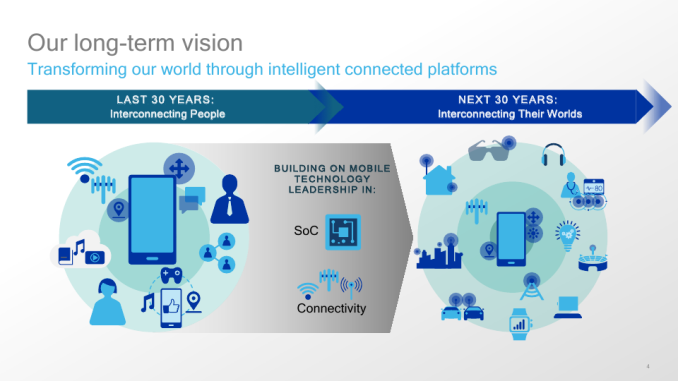
Right now Qualcomm is the world’s largest supplier of SoCs for mobile devices and telecom equipment. Last fiscal year the company earned $25 billion in revenue: $17B from selling chips and $8B from technology licensing. In the recent years Qualcomm has been trying to diversify its business and offered various solutions for automotive, IoT, healthcare and even datacenter industries. While the company has been gradually expanding its product portfolio with various solutions, mobile SoCs has remained its bread and butter for products sold. Moreover, some of the markets and products categories hard to break into due factors such as conservative approach of manufacturers, very long development cycles, etc. For example, despite of having CPU, GPU, sensors and other IP, Qualcomm has never made into Top 10 suppliers of automotive semiconductors (according to IHS).
By contrast, NXP has been focusing on mixed-signal semiconductors as well as various specialized microprocessors and microcontrollers. NXPs chips are used inside automobiles, in healthcare equipment, NFC equipment (in fact, NXP was one of the inventors of the technology) and in hundreds of other devices. Based on data from IHS, NXP earned $9.72 billion in revenue last year.

While Qualcomm and NXP overlap in certain areas, they aren't direct rivals in any significant sense of the word; the sum of their revenues come from different markets. Therefore, the acquisition will be complementary for Qualcomm because it greatly expands its addressable markets (potentially up to $138 billion in 2020) and brings thousands of new clients (Qualcomm says that NXP serves 25K direct and indirect customers). The combined company will have revenue of well over $30 billion and will be the world’s No. 3 supplier of semiconductors after Intel ($51 billion in 2015) and Samsung ($40 billion), based on rankings from IHS. Keep in mind that Samsung sells tons of commodity DRAM and NAND flash memory, whereas the new Qualcomm will specialize on various general purpose, automotive, IoT and special purpose computing solutions. In fact, the new Qualcomm will be a rather unique company with no direct rivals of comparable sizes, as companies like Avago (together with Broadcom), MediaTek, Texas Instruments, Renesas and other earn considerably less.
During the conference call with investors and financial analysts, the management of Qualcomm and NXP emphasized multiple times that the new company will not only be able to develop unique solutions thanks to massive amount of IP available to leverage (some of which goes back to semi IP from Motorola and Philips), but will be able to address automotive and IoT industries better than its competitors. In the best case scenario, Qualcomm will be able to offer highly-integrated platforms for hundreds of emerging devices from smart wearables to 5G-enabled IoT equipment to self-driving automobiles with wireless charging, in addition to more advanced platforms for hardware we use today, such as smartphones, routers or servers. At the same time, while the management teams accentuate that the transaction is not about cutting costs or synergies, it is inevitable that there will be redundancies and optimizations. Therefore, some existing projects are expected to be cancelled (it will be interesting to see what happens to Freescale’s CPUs, for example) and some will be merged. Qualcomm predicts that two years after the two firms merge, the new company will save at least $500 million annually.
The Road Ahead
The acquisition of NXP clearly makes a lot of sense for Qualcomm, but the integration of the two companies is not going to be easy. Firstly, NXP is still integrating Freescale Semiconductor (the deal closed last December). Secondly, NXP has its own semiconductor fabs (all of which are outdated and Qualcomm has never had its own fabs). Thirdly, NXP has more employees than Qualcomm itself (45K vs 27K). Finally, the new company will have to remain very agile to remain competitive on rapidly developing markets, such as smartphones.

Executives of Qualcomm said on Thursday that the combined company would be managed by execs from both firms, who know how certain businesses work. For example, Qualcomm plans to use NXP’s sales teams to sell Qualcomm-branded devices for IoT because these people know the market and know how to address it. In the meantime, Qualcomm does not have immediate plans to get rid of NXP's semiconductor production facilities and NXP’s execs will continue to manage them. But in longer term, the company may reconsider its approach to manufacturing as Qualcomm has long based its business around being a fabless semiconductor. Overall, while the integration efforts are underway, there are things that may change between now and late 2017, when the deal is expected to close. Therefore, only time will tell how the combined company will look like and how it will be managed.
No matter how optimistic execs from Qualcomm and NXP sound today about the prospects of the merged company, it will be a very tough job to blend the two firms. Nevertheless, the importance of connected devices will only grow in the coming years (one may call it the 5G era) and therefore having the whole package of IP needed to build different kinds of devices (from water quality sensors to smart cars and smart buildings) is clearly important.
Gallery: Qualcomm to Acquire NXP, Creates A Massive Semiconductor Company





More...
-
10-28-16, 08:57 PM #6429
Anandtech: Wi-Fi Alliance Begins to Certify 802.11ad WiGig Devices
The Wi-Fi Alliance this week began to certify products featuring wireless modules compatible with the 802.11ad standard (aka WiGig). The certification will help to ensure that all WiGig-branded devices, which have been around for some time, can flawlessly operate with each other and deliver expected multi-gigabit performance over 60 GHz spectrum.
The WiGig technology (IEEE 802.11ad) is a short range communication standard that enables compatible devices to communicate at up to 7–8 Gb/s data rates and with minimal latencies, using the 60 GHz spectrum at distances of up to ten meters. Since 60 GHz signals cannot penetrate walls, the technology can be used to connect devices that are in direct line of sight. Given the limitation, WiGig cannot replace Wi-Fi or even Bluetooth, but it can enable devices like wireless docking stations, wireless AR/VR head-mounted displays, wireless high-performance storage devices, wireless displays, and others devices which need a lot of bandwidth.
To date, Intel and Qualcomm have released several tri-band chipsets that support the 2.4 GHz, 5 GHz and 60 GHz spectrums as well as Wi-Fi, Bluetooth and WiGig technologies. The Wi-Fi Alliance has already certified Intel’s Tri-Band Wireless 18260 (Maple Peak) and Qualcomm’s QCA9500 802.11ad-compatible chipsets as well as multiple devices that use them (including Dell’s Latitude E7450/70 as well as 802.11ad 60 GHz USB adapters from Peraso and Socionext). Going forward, the organization will certify other products, including smartphones and docking stations.
It should be noted that the start of WiGig certification on its own isn't going to be the catalyst to cause WiGig adoption to take off, but it will increase chipset developers', device makers', and end users' confidence in the standard. Designers of Wi-Fi chipsets and manufacturers of actual systems have been reluctant to adopt 802.11ad so far because the infrastructure is absent and so is demand, a classic chicken and egg dilemma. With the official certification process things will likely get a little better, mainly because of added confidence.
Meanwhile, analysts from ABI Research believe that 180 million of WiGig-enabled chipsets will ship inside smartphones already next year with 1.5 billion WiGig devices shipping in 2021.
Image Source: Blu Wireless Technology.
More...
-
10-31-16, 09:17 AM #6430
Anandtech: Desktop Kaby Lake-S i7/i5 Lineup and 200-Series Chipsets Leaked
Intel has already started to sell low-power dual-core Core i5/i7 Kaby Lake microprocessors for notebooks, but desktop parts with four cores and high frequencies are due in early 2017, as Intel announced back at IDF and the Kaby Lake-Y/U launch. In advance of the desktop launch, as is typical with how CPUs are launched, Intel has to send out qualification and near-retail samples to partners for pre-testing of release systems. Typically this is kept under wraps, without official public announcements (it's up to you how many of the leaks you want to believe), but late last week Intel sent out a 'Product Change Notification' through its online/public channels, with details about a good portion (no way to tell if it is all the SKUs) of Intel's Core i7 and Core i5-7000 series parts.
Within the PCN, Intel notified its customers about an additional assembly/packaging site for its desktop Kaby Lake-S chips in Vietnam and therefore had to disclose model numbers of the CPUs as well as some of the specifications. In addition, in a separate PCN detailing package adjustments for how chipset ICs are shipped, it would seem that Intel has also mentioned names of its upcoming 200-series chipsets.
Gallery: Intel Discloses Kaby Lake-S Lineup, Base Frequencies


According to Intel’s document for partners, the company intends to release at least 11 quad-core processors for desktops based on the Kaby Lake microarchitecture in Q1. What is noteworthy is that the company wants its customers to get ready to receive the first shipments of the KBL-S chips assembled in Vietnam starting from November 4, 2016, this week (which means that the final specs of the new processors have been set and will only be changed in extreme circumstances). The initial KBL-S lineup would seem to include three Core i7 SKUs, seven Core i5 CPUs as well as one Xeon E3 v6 product. (The fact that a Xeon v6 is included in this is interesting, given that Intel removed standard chipset support for Xeon E3 CPUs with Skylake and v5, meaning that both consumer and enterprise platforms are due to land in January.)
All the Kaby Lake-S processors will use the B0 stepping of the core, and will have 100-300 MHz higher base frequency compared to their Skylake-S counterparts. The PCN does not explicitly state the TDP, however we do not expect much to change given the slightly improved 14+ nm technology and the increased frequencies (same thing applies to cache size, which has been consistent for several generations). We have already observed that mobile Kaby Lake CPUs have higher clock rates compared to their predecessors due to enhancements of Intel’s 14+ nm process technology, and we see that their desktop brethren also have improvements on this front. We do not have the final Turbo frequencies at hand, but we expect them to be considerably higher than the base clock rates.
*CPU details taken from this piece at PCOnlineBasic Specifications of Quad-Core Intel Core i5/i5 and Xeon E3 Kaby Lake-S Skylake-S Model Cores
/ThreadsFreq.
(Base)TDP Product
CodeS-Spec Model Freq.
(Base)i7-7700K 4/8 4.2 GHz 95W CM8067702868535 SR33A i7-6700K 4.0GHz i7-7700 3.6 GHz 65W CM8067702868314 SR338 i7-6700 3.4GHz i7-7700T 2.9 GHz 35W CM8067702868416 SR339 i7-6700T 2.8GHz i5-7600K 4/4 3.8 GHz 95W CM8067702868219 SR32V i5-6600K 3.5GHz i5-7600 3.5 GHz 65W CM8067702868011 SR334 i5-6600 3.3GHz i5-7600T 2.8 GHz 35W CM8067702868117 SR336 i5-6600T 2.7GHz i5-7500 3.4 GHz 65W CM8067702868012 SR335 i5-6500 3.2GHz i5-7500T 2.7 GHz 35W CM8067702868115 SR337 i5-6500T 2.5GHz i5-7400 3.0 GHz 65W CM8067702867050 SR32W i5-6400 2.7GHz i5-7400T 2.4 GHz 35W CM8067702867915 SR332 i5-6400T 2.2GHz E3-1205v6 ?/? 3.0 GHz ? CM8067702871025 SR32D - - Additional Info from Other Sources i3-7300* 2/4 4.0 GHz 65W ? SR2MC i3-6300 3.8 GHz Pentium G4620* 2/2 3.8 GHz 51W ? SR2HN Pentium G4520 3.6 GHz Pentium G3950* 2/2 3.0 GHz 51W ? SR2MU Pentium G3920 2.9 GHz
Aside from the 14+ process offering higher frequencies, the base microarchitecture of Kaby Lake-S, as explained at the release of Kaby Lake-Y/U in September, is essentially the same as Skylake. However, on top of increasing the frequencies, Intel is also adding in Speed Shift v2 which allows for much quicker adjustments in CPU frequency over Skylake (down to 10ms rather than 30ms).
It remains to be seen is whether the new 14+ process technology will also enable considerably higher overclocking potential compared to existing CPUs. If it does, then the new chips have a chance to become rather popular among enthusiasts, potentially toppling the i7-2600K as a long term favorite.
It might be noted is that Intel’s Kaby Lake-S will have to compete not only against their predecessors, but also against AMD’s Zen products due in Q1. That being said, some would argue that given AMD's recent presentation of certain benchmark metrics, Zen is geared more towards the high-end desktop crowd. Nevertheless, it looks like early 2017 is going to be an interesting time for microprocessors.
200-Series Chipsets
In addition to model numbers of its Kaby Lake CPUs, Intel also revealed the names of its 200-series chipsets in another document it sent to partners. As expected, the lineup will include the Z270 PCH for enthusiast-class PCs with overclocking capabilities; Q270, H270 and H250 for mainstream systems and B250 for office/business computers.
Also in the list of chipsets were a couple of unknowns as well.Intel 200-Series Chipsets Name Socket Stepping Product Code S-Spec Intel H270 LGA1151 A0 GL82H270 SR2WA Intel Z270 GL82Z270 SR2WB Intel B250 GL82B250 SR2WC Intel Q250 GL82Q250 SR2WD Intel Q270 GL82Q270 SR2WE Intel C422 LGA1151? A0 GL82C422 SR2WG Intel X299 ?!? A0 GL82X299 SR2Z2
Listed in the PCN is C422, which because it has a 'C' in the name means that this is typically geared towards workstations and Xeon platforms. This may be in line with the E3-1205 v6 CPU SKU as seen in the processor list.
Also is X299, which really throws up a few question marks. The X-series chipsets are typically for Intel's High-End Desktop Platform (HEDT), and we've had X58, X79 and X99 in the last decade, from Nehalem up to Broadwell-E which was released back in May. This means either one of two things - either Intel is bringing the X nomenclature to Kaby Lake, the mainstream platform, or this is the next chipset for HEDT and the future Skylake-E series of processors. The first option in making X299 a Kaby Lake-related platform seems a little odd. However the second one, with Skylake-E, makes sense. After X99, the X119 name doesn't have the same marketability (if Intel was to keep parity with number jumps), but by pushing Skylake-E onto the 200-series naming as X299, it moves both mainstream and HEDT chipset naming strategies onto the same track. Note that we don't have a time-frame for Skylake-E as of yet.
Intel’s motherboard customers, given the Q1 launch, must be ready to receive the 200-series PCH ICs on new reels. According to the PCN, these will come with additional protections bands starting from December 2, 2016. Intel may or may not announce the whole 200-series (not X) lineup at CES, given this late in the day adjustment to core components for the motherboards.
As for improvements of the Intel 200-series chipsets, we are still waiting on official confirmation as to exactly what to expect. Various unconfirmed leaks have indicated additional PCIe 3.0 chipset lanes, some new platform features and support for Intel’s Optane SSDs, however we will be here for the official launch when the time comes. It might be worth noting that almost all the motherboard manufacturers have now formally announced new 100-series BIOS support for Kaby Lake CPUs, meaning not all enthusiasts will have to get new motherboards.
Gallery: Intel Discloses 200-Series Chipset Names


Sources: Intel, PCOnline
More...
Thread Information
Users Browsing this Thread
There are currently 7 users browsing this thread. (0 members and 7 guests)





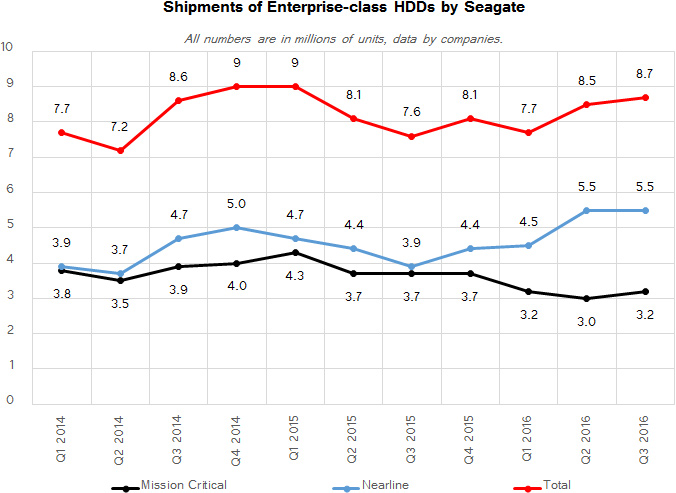

 Quote
Quote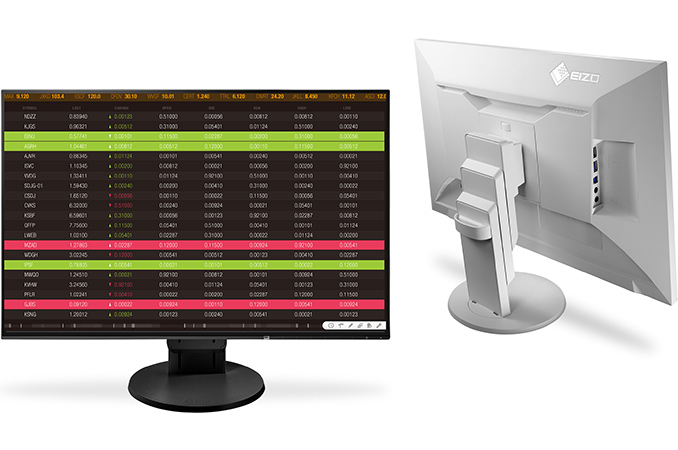


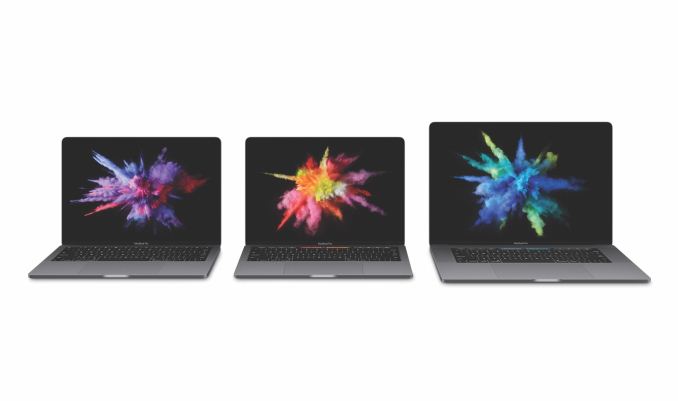
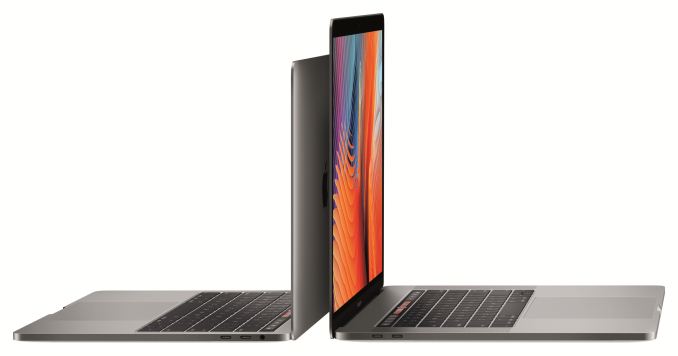
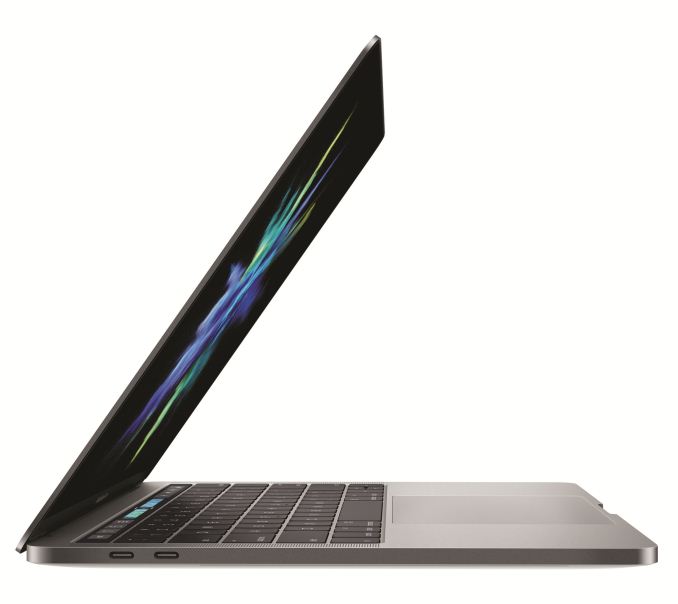

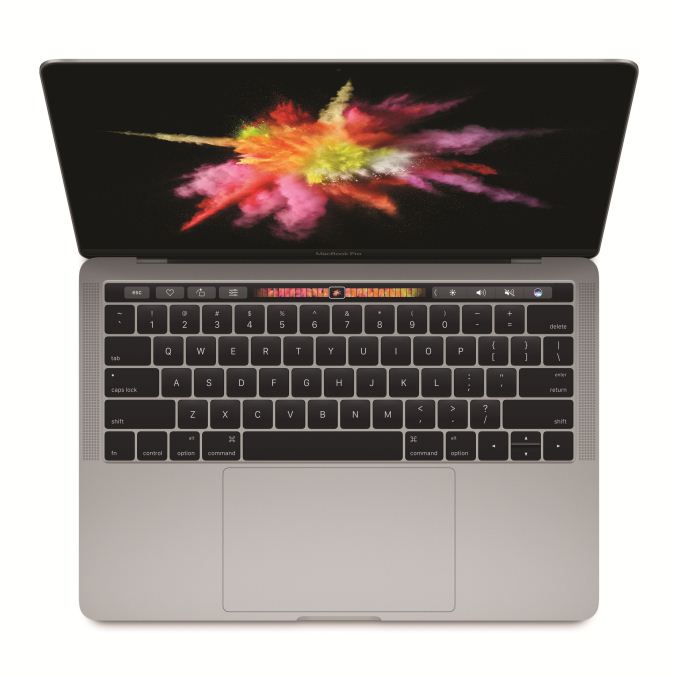
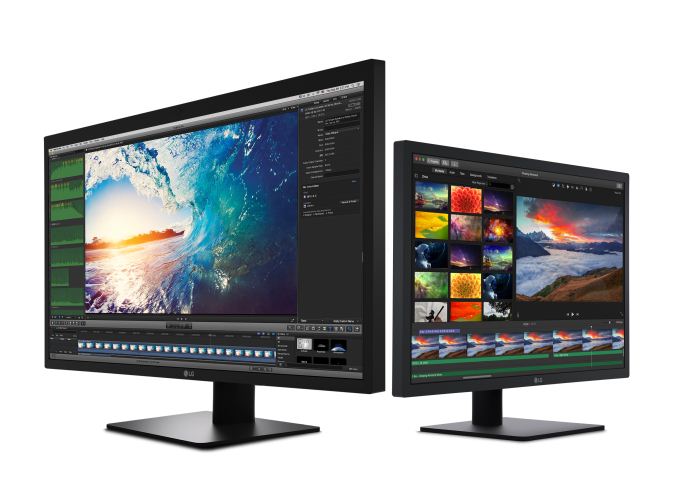
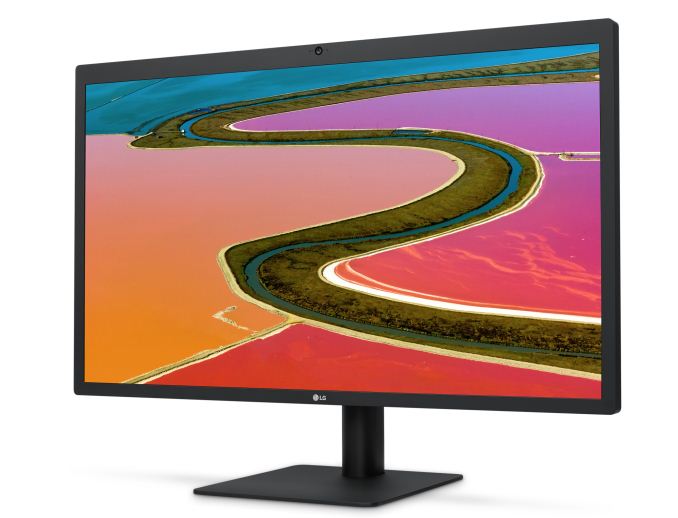

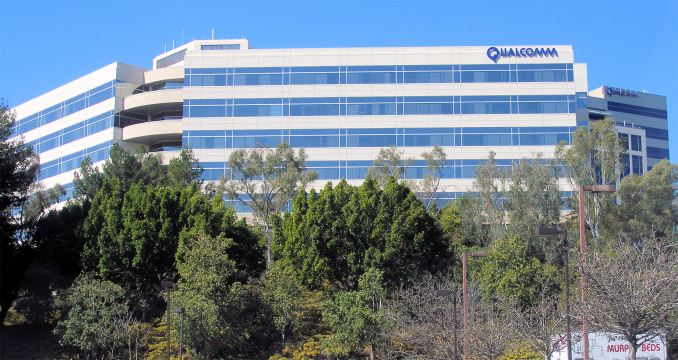



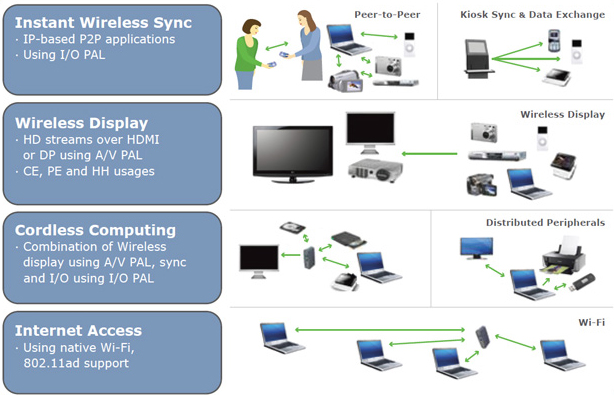
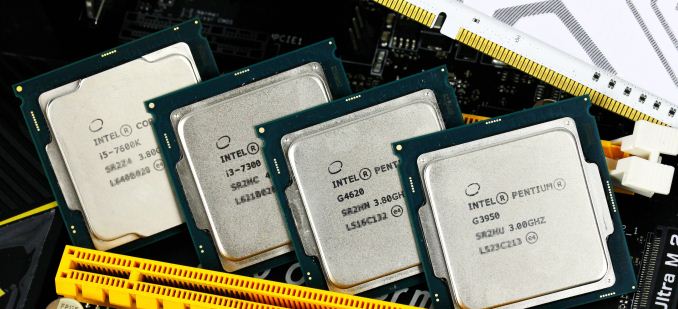
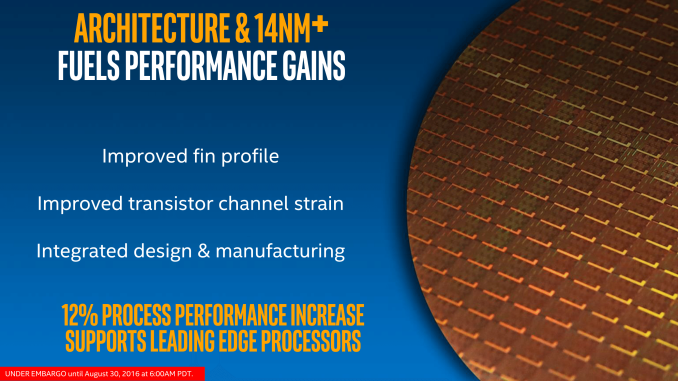
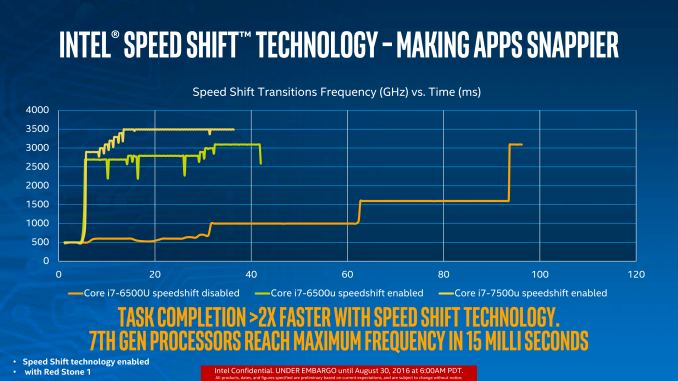
















Bookmarks